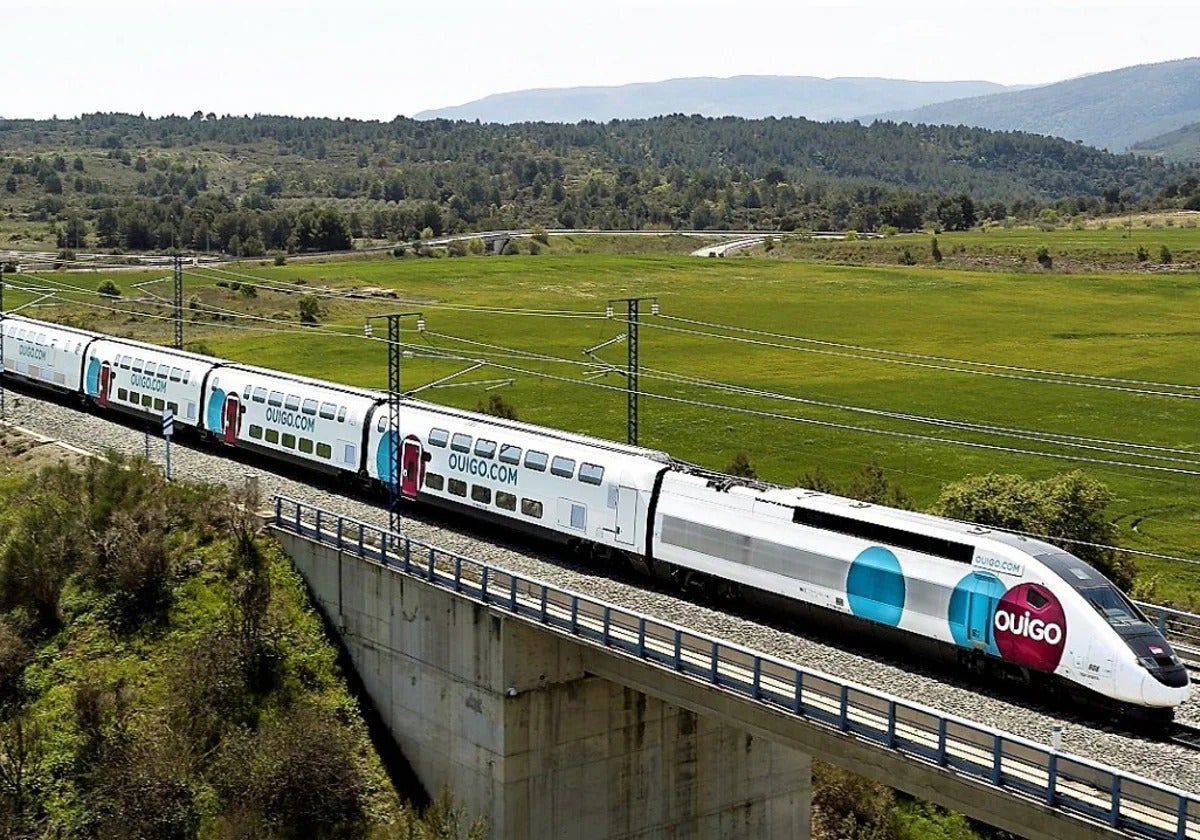New low-cost train company arrives in Malaga: these are the prices that will smash the high-speed market
From next week, Ouigo will have two daily departures in each direction between Madrid and the capital of the Costa del Sol, offering the cheapest tickets and carriages with more seats
Those who usually travel between Malaga and Madrid have high hopes for next week, when the new operator Ouigo will launch its low-cost services. On 16 January 16, the second private operator (after Iryo) and the fourth on the high-speed line (LAV) that connects the capitals of Spain and the Costa del Sol will start offering journeys, together with Renfe's two brands (AVE and Avlo). Passengers can expect a substantial reduction in the price of high-speed train tickets, but also more seats and services, especially at the weekends and on dates with higher demand.
It is true that the French company's arrival on the scene offers reasons for optimism, especially for forward-thinking rail passengers, who can book two or three months in advance at very low prices. But it will be noticeable even when the trains are always full, such as at Easter, during the key dates of the summer holidays, Christmas, long 'puente' weekends, etc.
To start with, the average price of the connection is going to go down, due to the fact that Ouigo offers its initial (and real) fares from 9 euros each way, and they do not tend to go up excessively on weekends. In fact, a search on 7 January 2025, for short-term travel, shows tickets for the weekend of the 17th (shortly after the inauguration) and the following days in January and February for 13, 15, 17, 19 and 25 euros each way (depending on the day). In fact, an introductory offer is currently open.
Fall in average price
To serve as a reference, the latest report by Spain's CNMC national commission for markets and competition on rail communications highlights that in cities similar in population to Malaga where Ouigo already operates, such as Valencia and Alicante, the average ticket price (including all operators) is 27 euros in the first case and 36 euros in the second. In contrast, in Malaga last year it was 44 euros.
However, at this point it is also necessary to take into account the demand, which in the case of the Costa del Sol is one of the highest in the country, and this makes prices more expensive, especially on the most important festive dates in the calendar.
Moreover, families, which until now have been the most 'forgotten' segment of the high-speed train tavel in Spain, are in luck. In this case, the great novelty is that Ouigo offers a fixed fare of 7 euros per journey for children between 4 and 13 years old (regardless of what adults have paid for it), and it is free for children under 3 years old travelling in the arms of one of the parents.
Record frequencies
Another key factor is the increase in daily frequencies. Initially, Ouigo will add two more departures in each direction: from Madrid trains will depart at 7.19am (arrival at 10.17am) and 3.23pm (arriving at 6.11pm). Meanwhile, from Malaga the trains will leave at 11.15am (arrival in Madrid at 2.10pm) and at 7.50pm (10.52pm arrival). A maximum of 14,000 seats per week will be put on the market, and journeys will take around three hours.
However, the company stresses its interest in working in Malaga and the Costa del Sol, hence its intention to increase the frequencies, at least to three daily departures in each direction in the short term. Currently, the French company has been awarded a maximum of five return journeys per day on the southern corridor (comprising Malaga and Seville) but it is feasible to ask track infrastructure company Adif for an increase in capacity.
If these are added to those offered by Renfe with the AVE (which has most of the train paths) and with its low-cost brand Avlo (14 departures in each direction), as well as those of Iryo (fice frequencies), from 16 January the Malaga-Madrid high-speed line will reach its highest ever number of frequencies. In total, there will be 21 trains running in each direction (even more at times of peak demand). This figure is twice as many as before liberalisation of the tracks, in the years following the pandemic.
Larger trains
In addition to the above, not only is the number of trains multiplied, but also the number of seats. Ouigo's trains have the largest capacity in the Spanish market, in a single convoy. The operator uses Alstom Euroduplex trains, with double height (two floors) and 509 seats. Although this will not be done in the short term, there are also plans to work with "multiple units", that is, trains in double composition, which in a single run would reach 1,018 seats.
Iryo uses Alstom-Bombardier and Hitachi's Frecciarossa, which can carry up to 461 passengers, while Renfe offers 400 seats on the Avlo and just over 300 on the AVE. On the other hand, it is also true that the AVE trains run very frequently in double composition on the Malaga-Madrid route, and at those specific times 800 passengers are carried on a single service.
In conclusion, the arrival of the new operator (which will be, for the moment, the last one to be able to compete in the high-speed corridor) will mean more opportunities to travel between Malaga, Madrid and other cities (with connection), and at a lower price? Although, as is the case now, to get a real bargain you will have to plan well, book several weeks in advance and compare the prices of all the operators.

